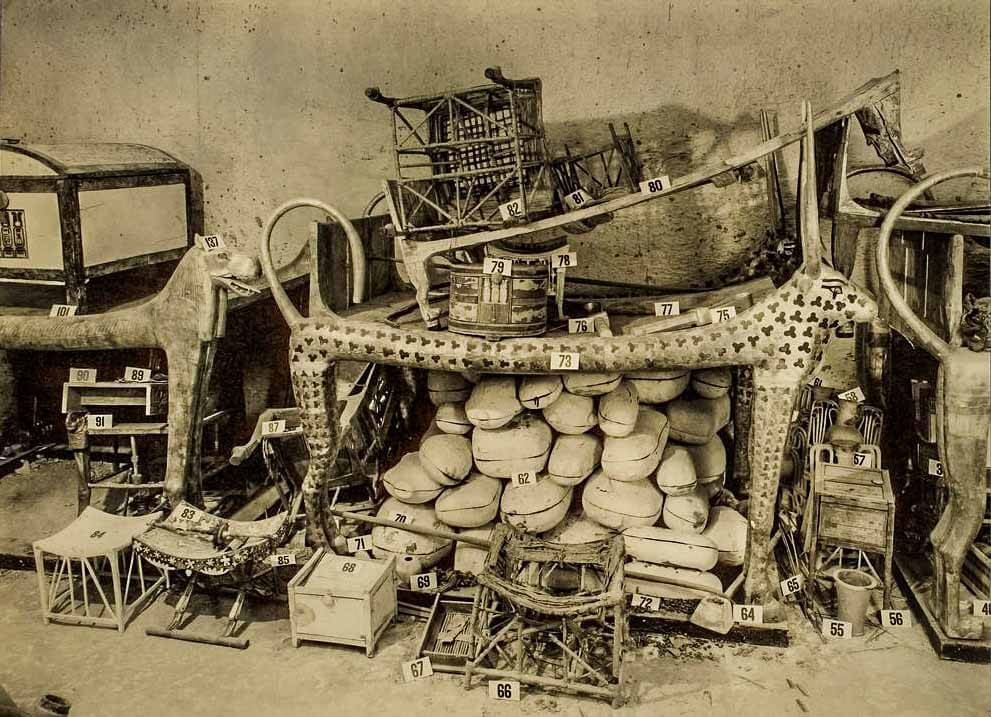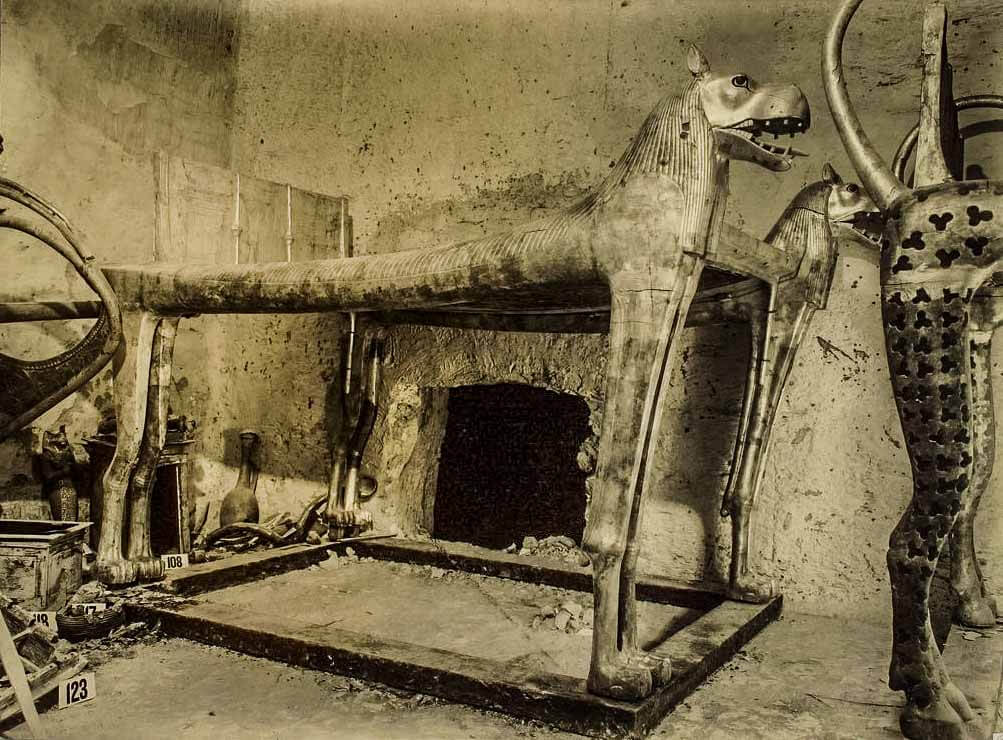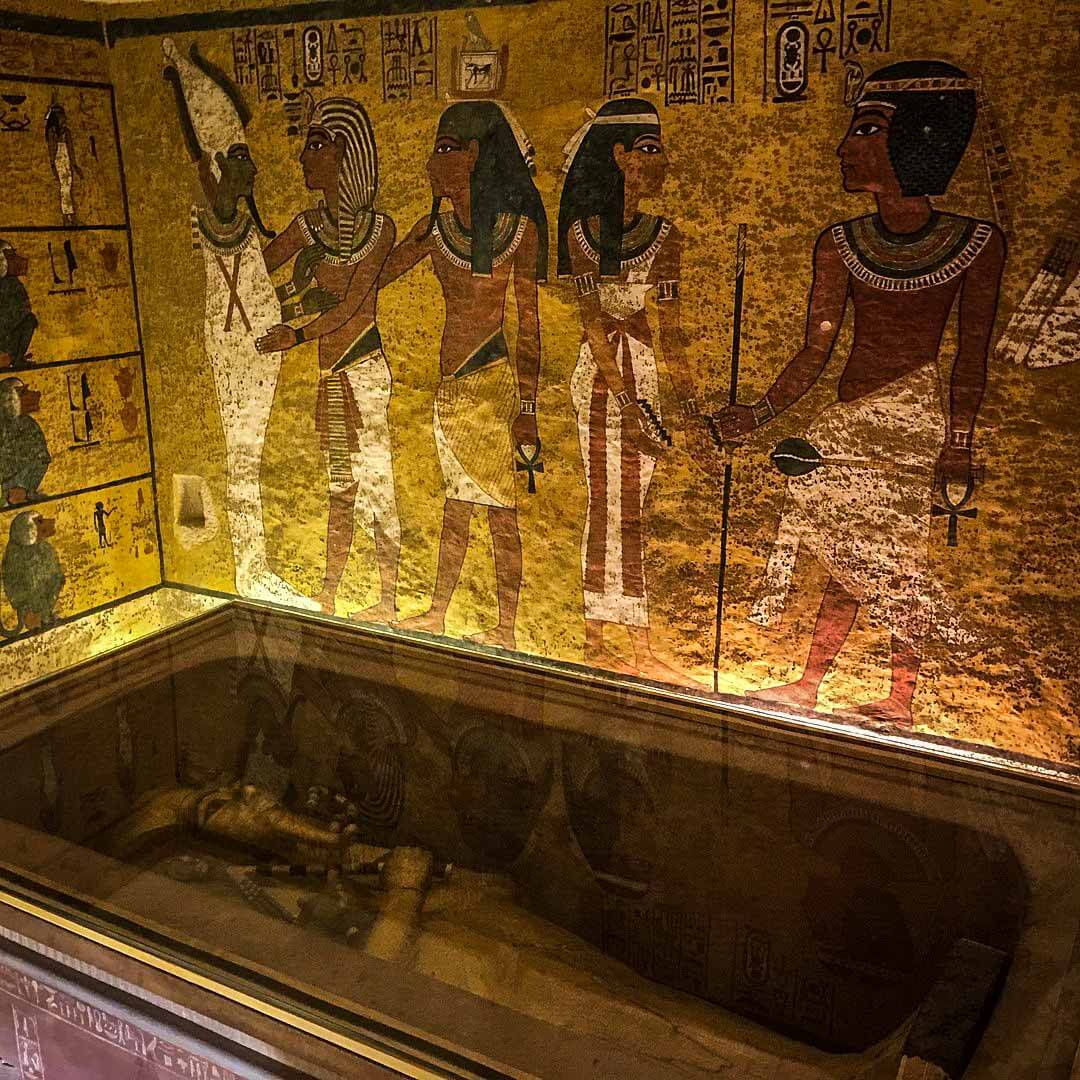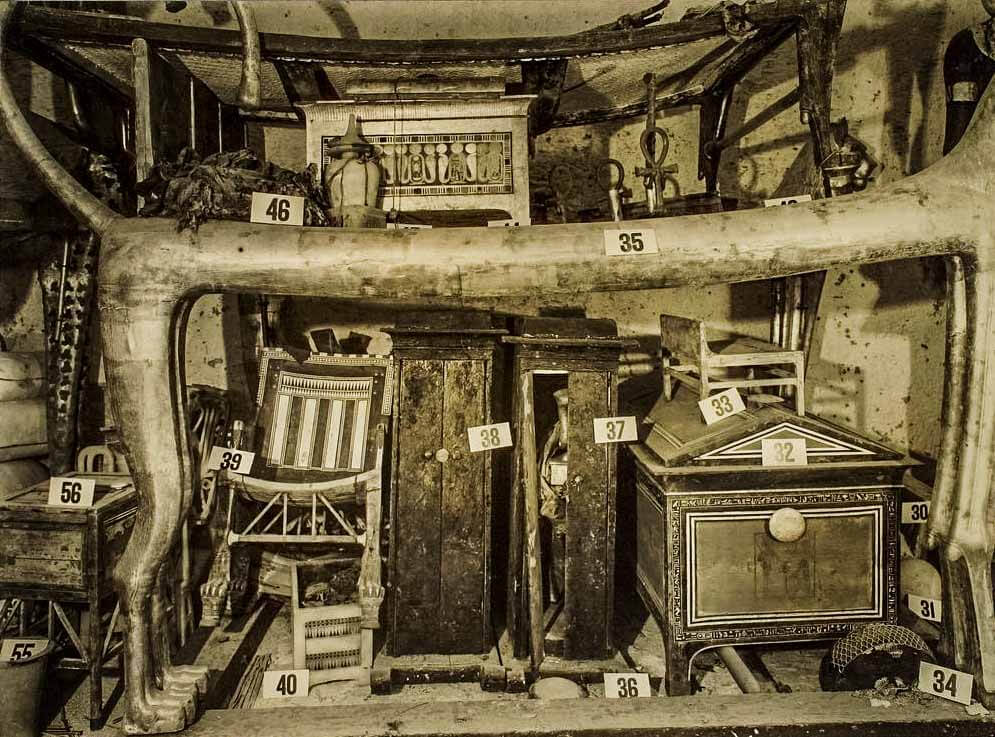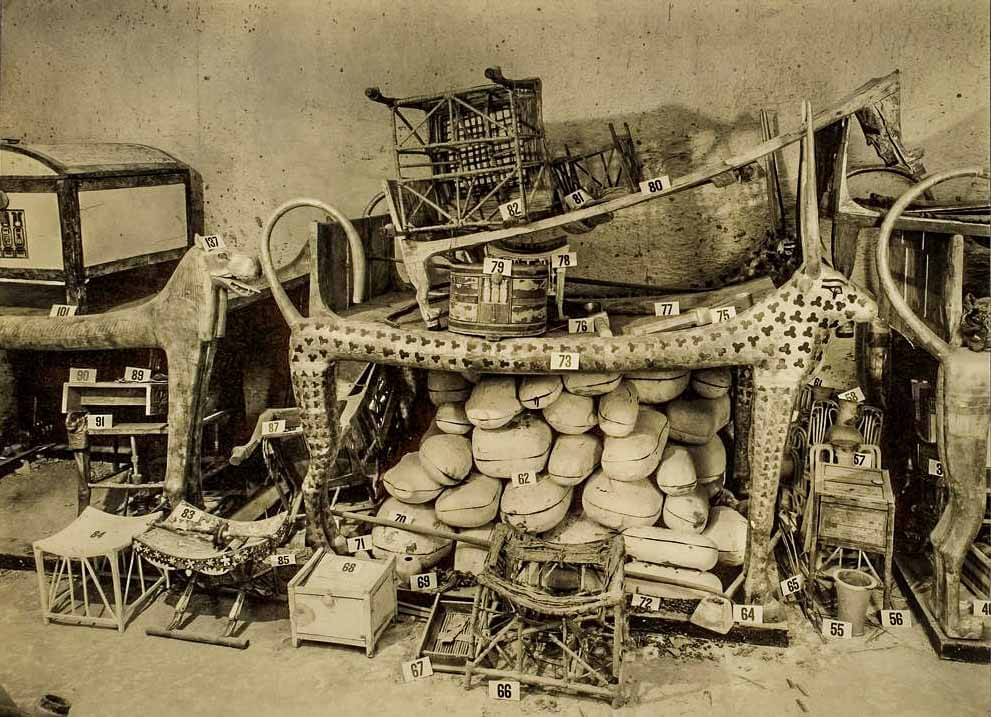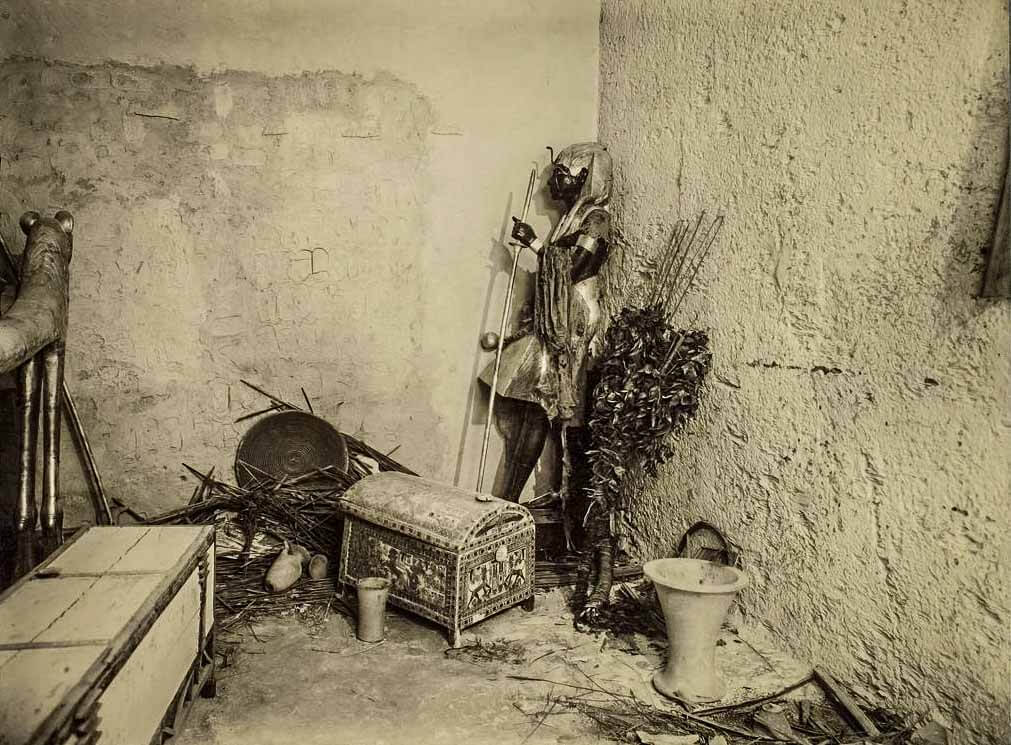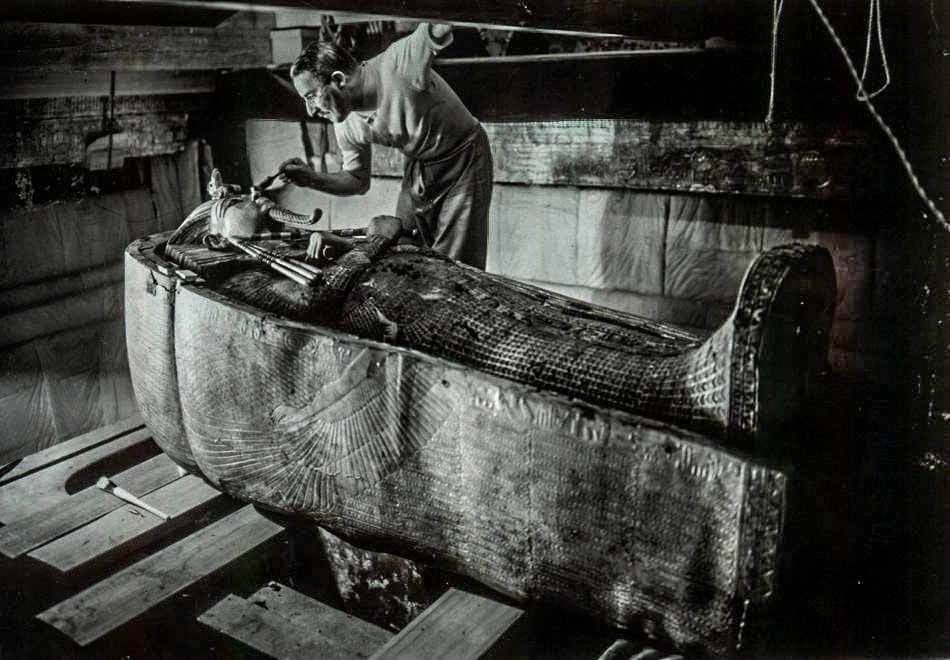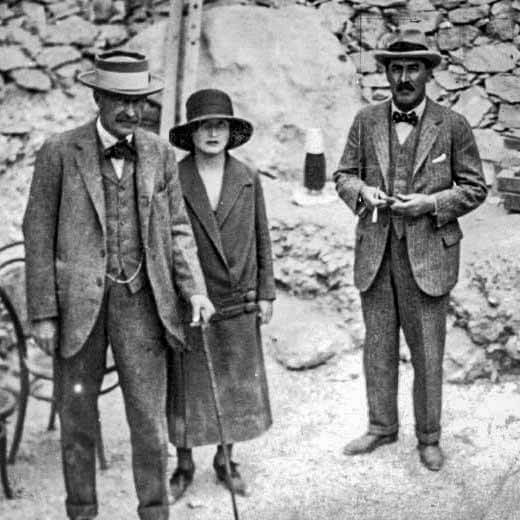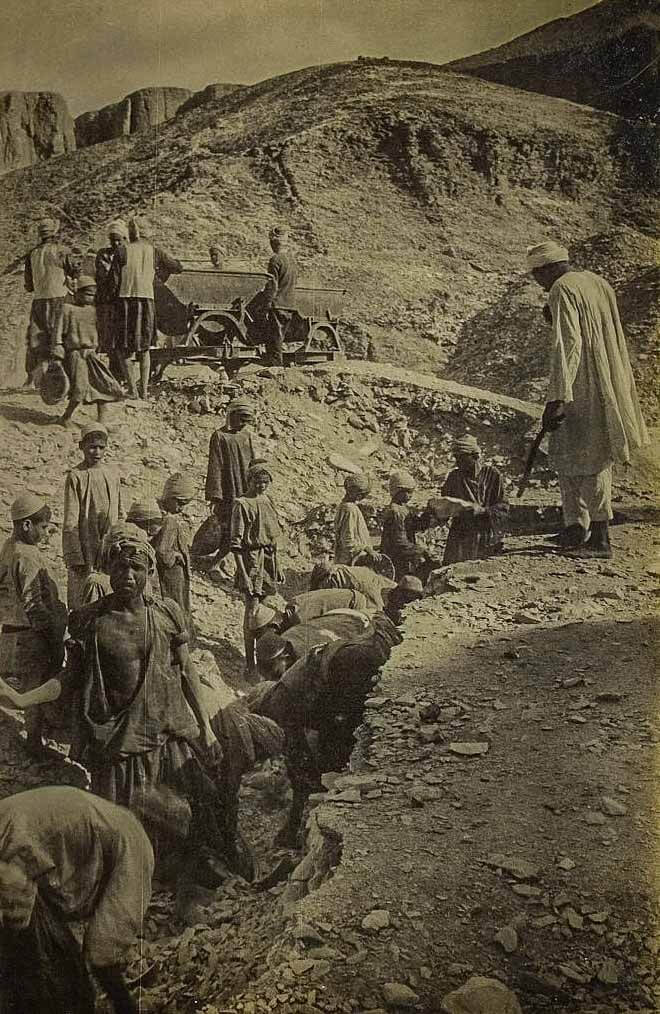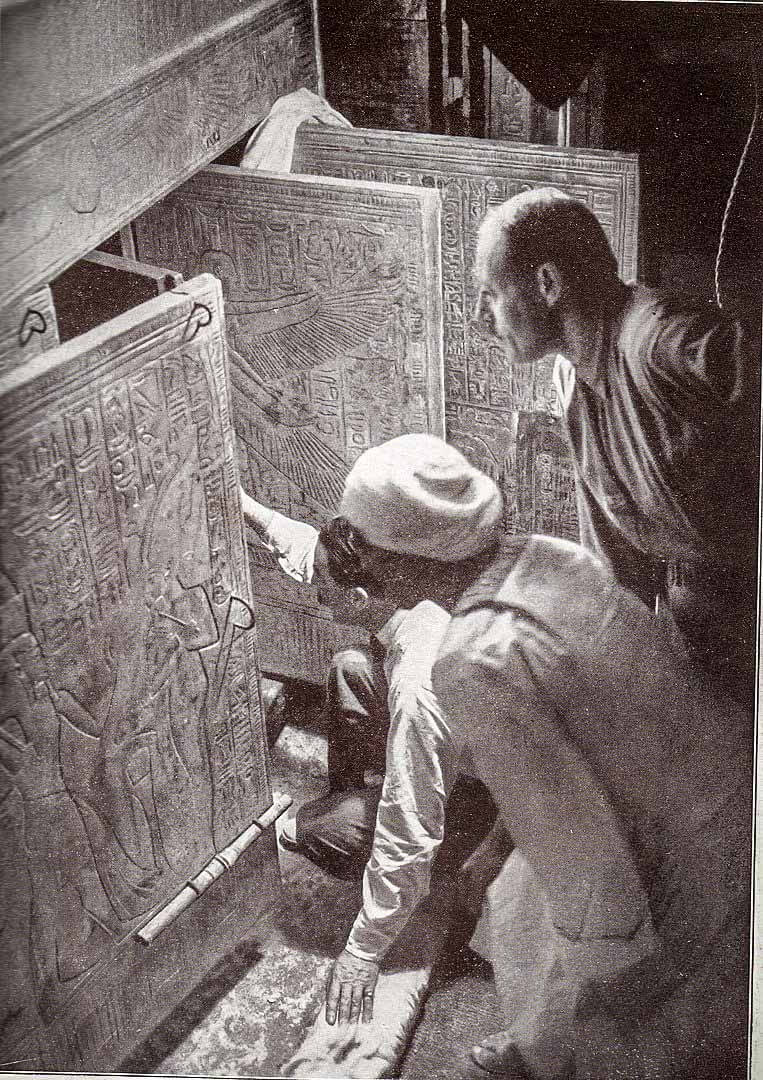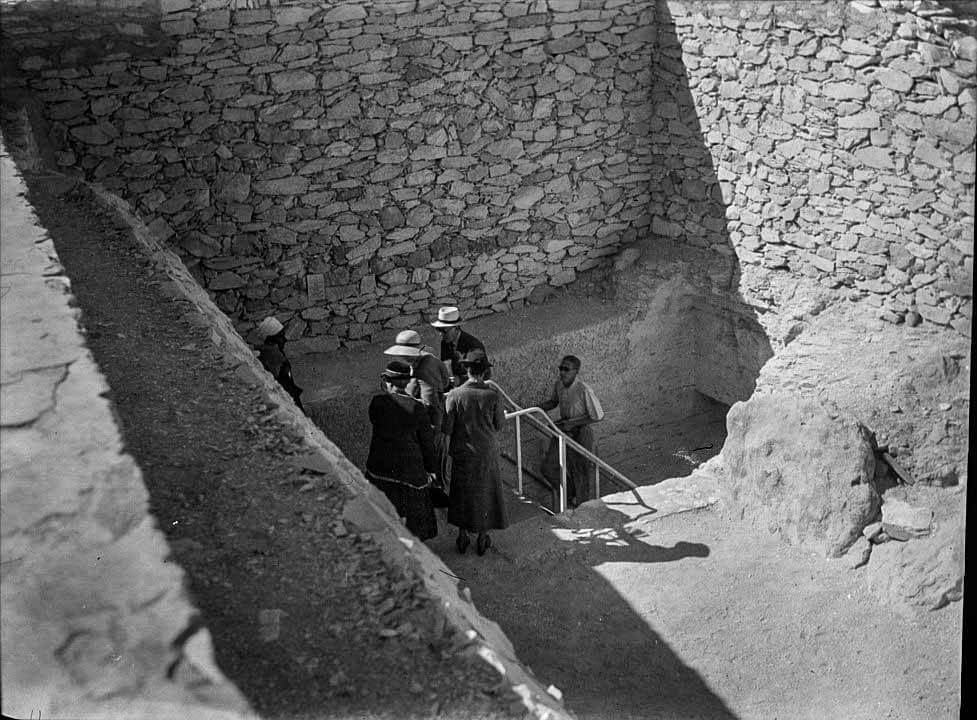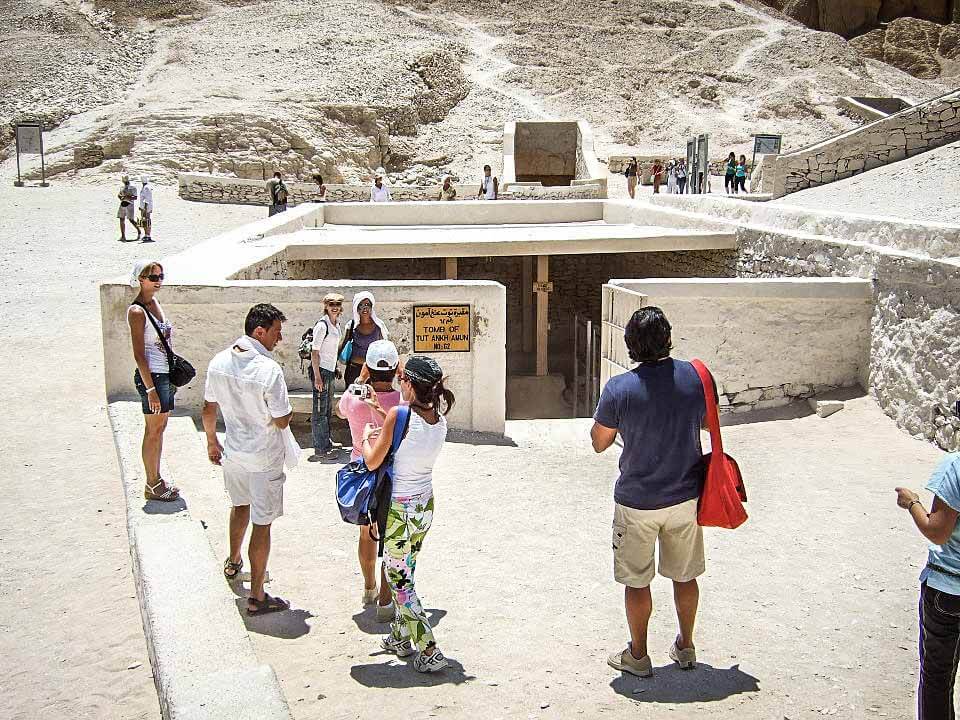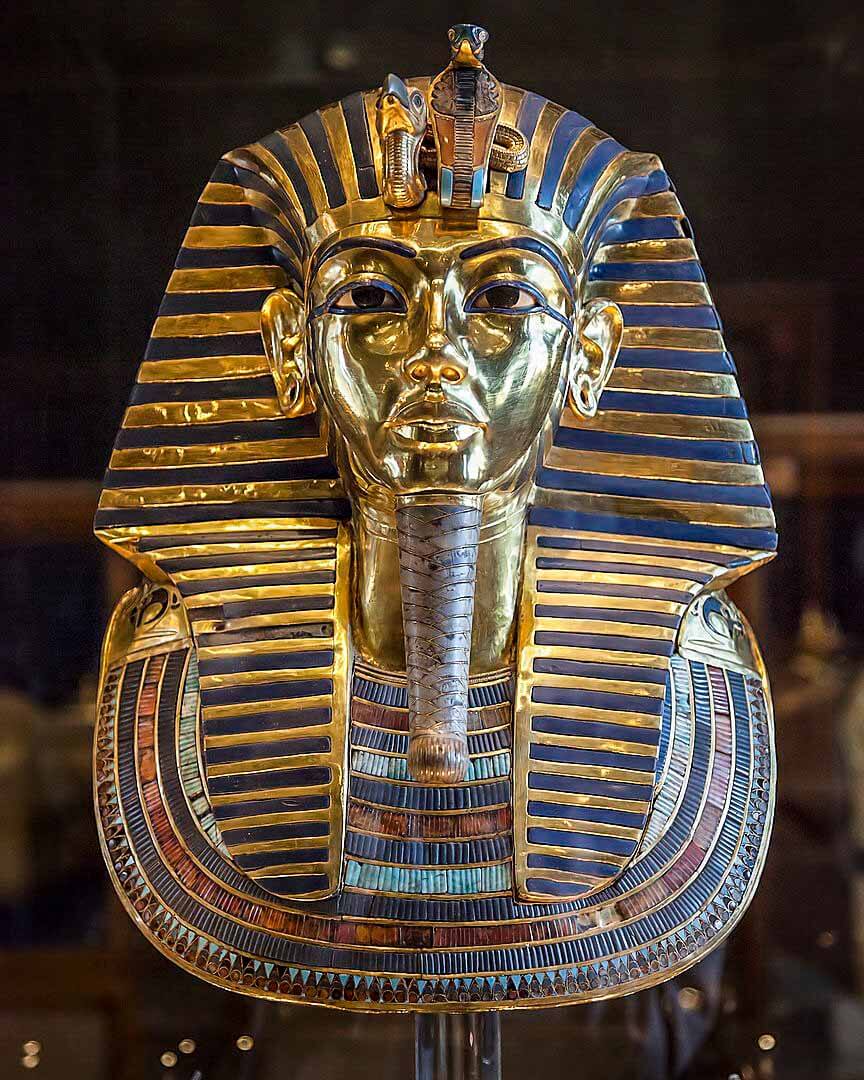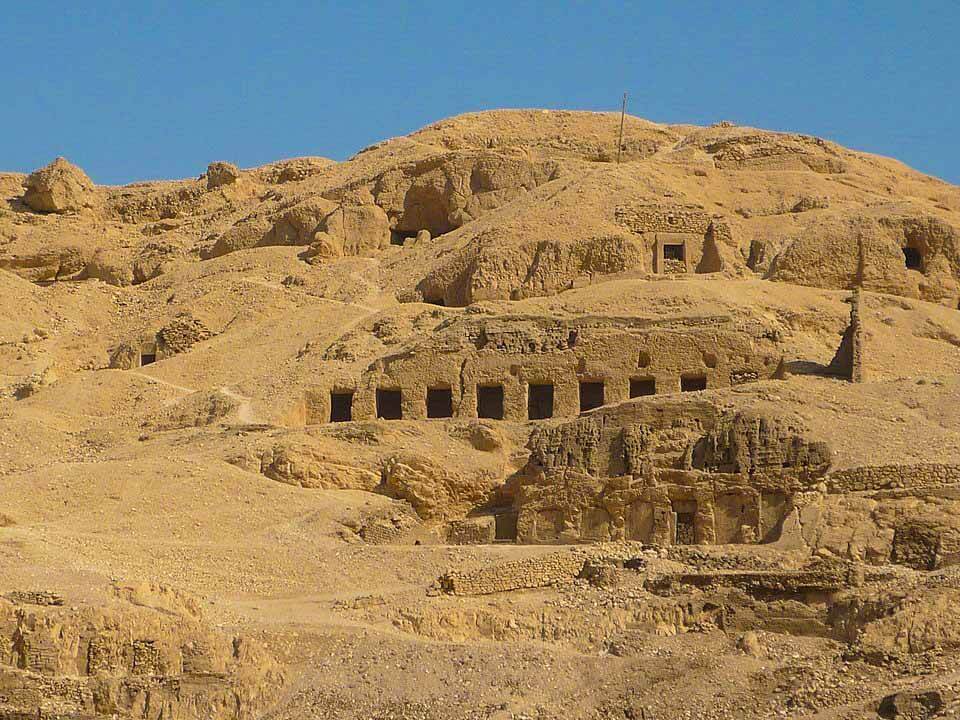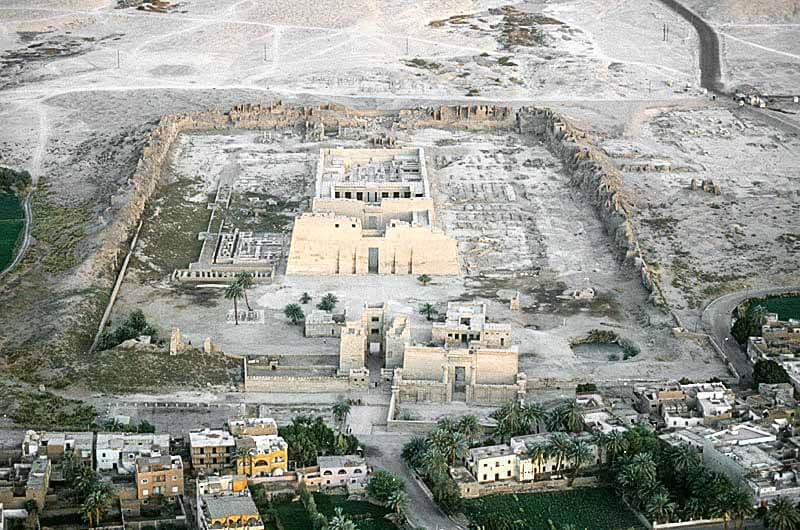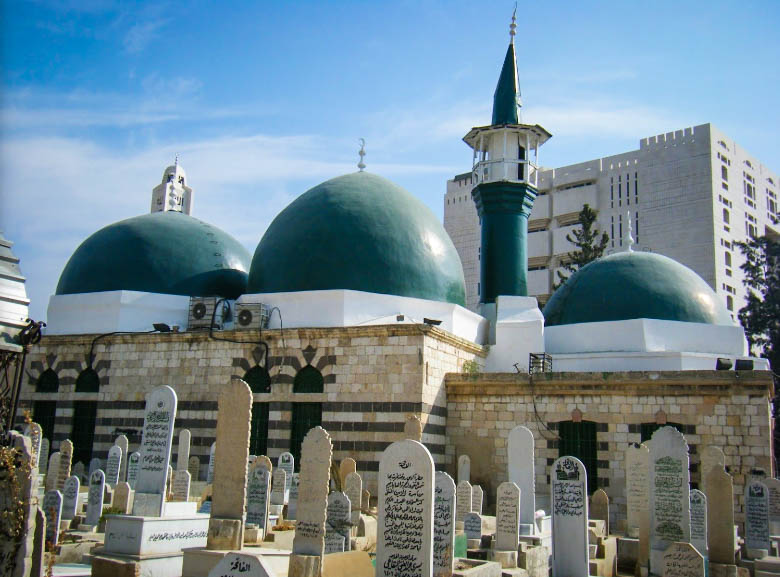Luxor, Egypt
Coordinates: 25.740394, 32.601405
Tutankhamun was an ancient Egyptian pharaoh who was the last of his royal family to rule during the end of the 18th Dynasty during the New Kingdom of Egyptian history.
His father was the pharaoh Akhenaten, believed to be the mummy found in the tomb KV55.
His mother is his father’s sister, identified through DNA testing as an unknown mummy referred to as “The Younger Lady” who was found in KV35.
Tutankhamun took the throne at eight or nine years of age under the unprecedented viziership of his eventual successor, Ay, to whom he may have been related. He married his half sister Ankhesenamun. During their marriage they lost two daughters, one at 5–6 months of pregnancy and the other shortly after birth at full-term.
The 1922 discovery by Howard Carter of Tutankhamun’s nearly intact tomb, in excavations funded by Lord Carnarvon received worldwide press coverage. With over 5,000 artifacts, it sparked a renewed public interest in ancient Egypt, for which Tutankhamun’s mask, now in the Egyptian Museum, remains a popular symbol.
The deaths of a few involved in the discovery of Tutankhamun’s mummy have been popularly attributed to the curse of the pharaohs. He has, since the discovery of his intact tomb, been referred to colloquially as “King Tut”.
There were 5,398 items found in the tomb, including a solid gold coffin, face mask, thrones, archery bows, trumpets, a lotus chalice, two Imiut fetishes, gold toe stalls, furniture, food, wine, sandals, and fresh linen underwear.
Howard Carter took 10 years to catalog the items.
On 4 November 2007, 85 years to the day after Carter’s discovery, Tutankhamun’s mummy was placed on display in his underground tomb at Luxor, when the linen-wrapped mummy was removed from its golden sarcophagus to a climate-controlled glass box.
The case was designed to prevent the heightened rate of decomposition caused by the humidity and warmth from tourists visiting the tomb.
Rumored curse
For many years, rumors of a “curse of the pharaohs” (probably fueled by newspapers seeking sales at the time of the discovery)[97] persisted, emphasizing the early death of some of those who had entered the tomb. The most prominent was George Herbert, 5th Earl of Carnarvon, who died on 5 April 1923, five months after the discovery of the first step leading down to the tomb on 4 November 1922.
A study showed that of the 58 people who were present when the tomb and sarcophagus were opened, only eight died within a dozen years; Howard Carter died of lymphoma in 1939 at the age of 64. The last survivors included Lady Evelyn Herbert, Lord Carnarvon’s daughter who was among the first people to enter the tomb after its discovery in November 1922, who lived for a further 57 years and died in 1980, and American archaeologist J.O. Kinnaman who died in 1961, 39 years after the event.
Know This
Entrance to Tut’s tomb is not included in the admission price. You must purchase a separate ticket at the Visitors Center


